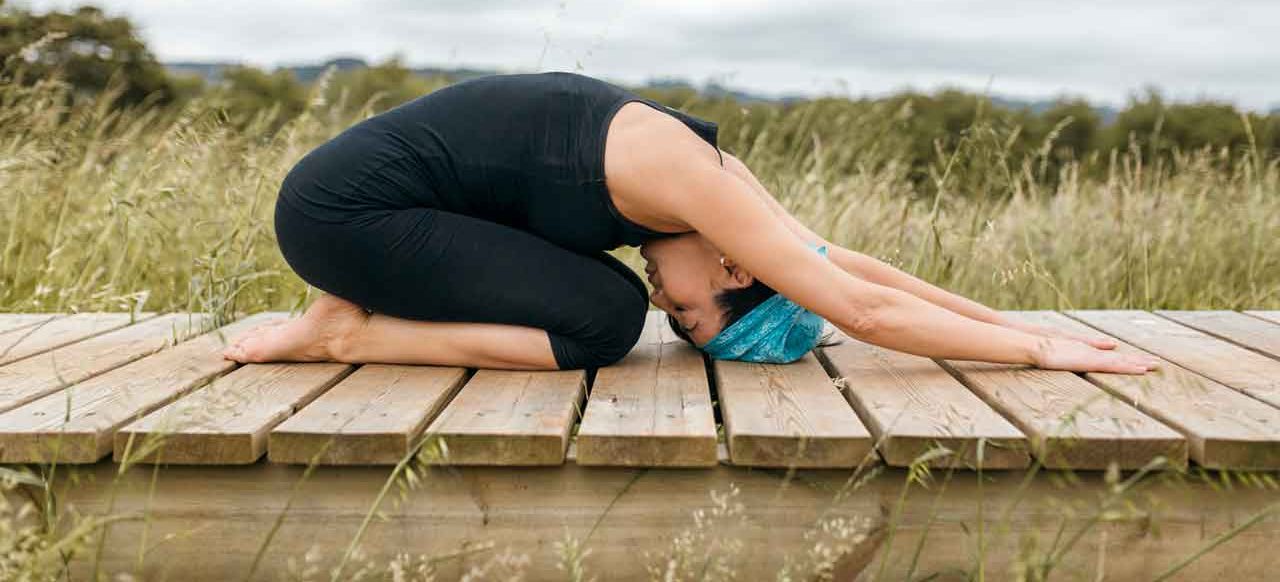Yoga for Back Pain

Are you considering physical therapy or yoga for back pain? Both can help you, especially if you mind your posture in between your exercises. Learn more.
About a quarter of American adults will experience low back pain for at least a day over any three months. If it sticks around for longer than those three months, you are considered to have a chronic case — which is true for up to 10 percent of us.
The American College of Physicians recommends that people with chronic back pain avoid painkillers and opt instead for one of several options in its 2017 guidelines, including yoga, though the group thought the evidence for acupuncture and meditation was superior.
YOU MIGHT ALSO LIKE: Health Benefits of Yoga for Depression
The case for yoga for back pain
Yoga can be as beneficial as physical therapy, according to a year-long study by the Boston Medical Center. About 70 percent of the 320 participants were taking some kind of pain medication at the beginning of the study. After three months, that number had dropped to half among participants who had taken a weekly yoga class. The same was true of people who saw a physical therapist 15 times. For the rest of the year, the yoga group took drop-in classes as needed and exercised at home. The physical therapy group saw their therapist as needed and followed their recommended exercise programs.
At year end, the two groups got similar results, beating a third group that just received some education about back pain and didn’t manage to cut their use of medication.
If you want more personal attention, look for a very small class or hire a yoga teacher to see you one-on-one. Even private visits may be less expensive than paying for a physical therapist — unless the therapist is covered by your insurance.
Getting started with yoga for back pain
A class is ideal, but you can begin at home with a video or by looking at pictures online. You can see sketches of the exercises in this study in an accompanying manual.
By the fourth week, the study included several yoga poses, including three at the wall, after warm-ups. You’ll follow with a cool-down. A sampler:
Wall-Dog. You may have heard of “Downward Dog” when you stand on all fours with your buttocks in the air. In “Wall Dog,” or “Half Dog,” your hands rest on the wall. Stand about a leg’s length away, and place your hands on the wall between shoulder and elbow height. Press your finger pads and palms into the wall. Imagine creating space between the vertebra in your back. Stay there for at least five full slow breaths.
Triangle at Wall. This is also a variation on a classic yoga pose, using a wall to make it easier. Also try doing a forward bend, standing up and facing the wall, and leaning into it.
Sphinx. This is the easiest of back-bends. Lie on your belly, legs side by side and arms at your sides. Push your tailbone down and then lengthen it toward your heels. Roll your outer thighs toward the floor, and feel your lower back broadening.
Cobra. You’ll begin as in sphinx, but this time you’ll straighten your arms to lift your chest off the floor. Keep your pubis and tailbone on the floor. This will limit how high you can go. Firm but don't harden your buttocks.
Bridge. Lie on your back. You might put a thickly folded blanket under your shoulders to protect your neck. Also place a block nearby where you can reach it.
Bend your knees and place your feet on the floor with your heels close to your sitting bones. Breathe out, and press your feet and arms into the floor so that you can lift your butt off the floor. You want your thighs parallel to the floor and your inner feet parallel as well. Keep your knees directly over your heels, but push them forward, away from your hips. Firming your outer arms helps broaden your shoulder blades, and try to lift the space between them at the base of your neck (where it's resting on the blanket) up into your torso.
Try to distribute the bend evenly though your spine.
If you like, you now can put a block at its highest height under your lower back. You also can interlace your hands in the space under your back, which pulls your shoulders back.
Back pain tends to go away after a few weeks, unless you’ve had an injury or are aggravating it with a bad work set up or other chronic stresses. Yoga will help make you more aware of your posture and prevent a recurrence.
Updated:
April 08, 2020
Reviewed By:
Janet O’Dell, RN